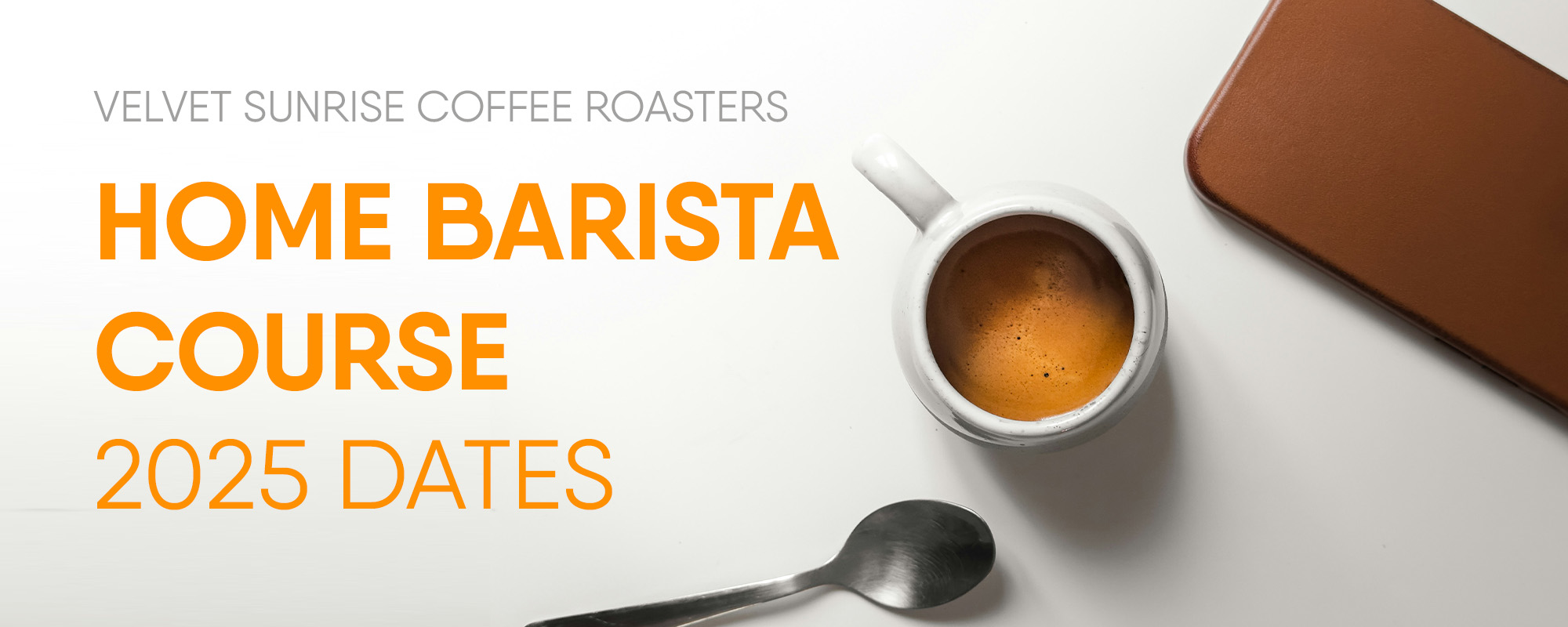Coffee Filter Comparison, Review, Recommendation
by Mark Hayward | February 14, 2022
Does your coffee filter matter?
Every morning, like a daily ritual, you brew your favourite cup of coffee. During those few minutes while you’re waiting for your brew, have you ever wondered if your coffee filter is affecting your cup of coffee?
Does your coffee taste like the cup you had at the cafe? Do you think it could be better?
Now that we’ve mentioned it, we’re sure you’ve wondered if the type of filter you’re using matters. Well, it certainly does!
Is it tasting papery, bleached, or just not right? Or maybe your pour over is draining too slow or too fast? Maybe it’s your filter!
This is a question I get asked regularly, so I thought we’d test out a dozen or so readily available filter, from paper to cloth to stainless steel, to see if we could see or taste a difference.
We’ve focused on hot coffee brewing here, well knowing that cold brew and espresso present whole new myriad of filtering choices. Here are our results. Happy brewing!
Paper vs. Metal vs. Cloth
The range of brewers and pour-over choices has blossomed recently. There are currently 32 models of automatic drip coffee makers certified by the Specialty Coffee Association for meeting ‘Golden Cup’ standards for temperature, brewing time and extraction quality.
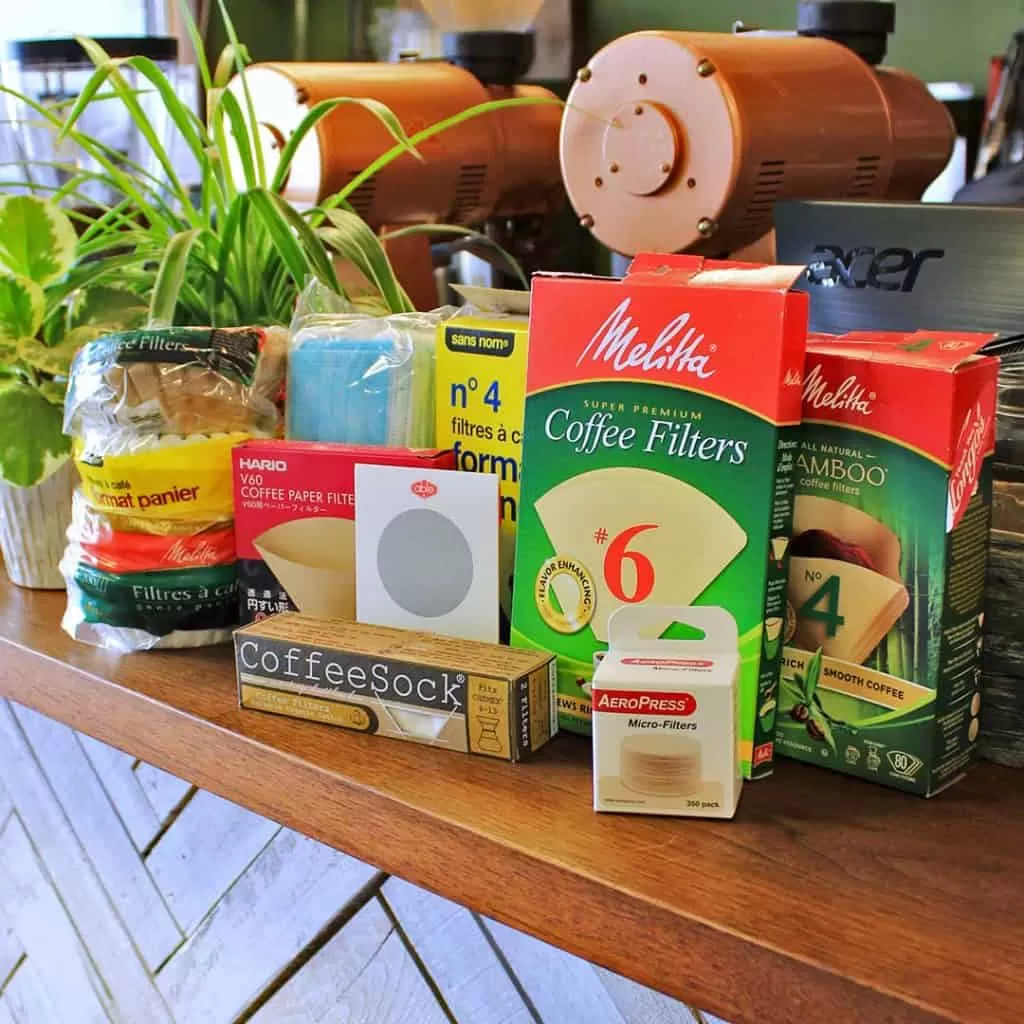
The options for manual pour over coffee makers is almost endless. From quality old school brand names like Melitta, Bodum, Chemex, Hario, Clever, Beehouse, to newer entrants like the origami dripper and the tricolate brewer, there are literally thousands of choices available.
Where filters are concerned, you may prefer and enjoy the convenience of a single use paper filter, while permanent metal and cloth filter have their own cheering sections. Why do I have an interest in this topic?
It happened to me a few years ago. While brewing coffee at a demo for the coffee buyer, I noticed that all the coffees we were brewing that day tasted similar. By the way, we were brewing on a Clever Brewer that day.
It was hard to choose between them, as they all had a similar taste.
I noticed that the filters we had were brown paper, so I had a look at the package. It said they were Melitta brand bamboo filters. On a spur of the moment idea, I thought to pour some hot water through one of the filters, without any coffee in it.
To my surprise, the water tasted distinctly of wet papery cardboard. We switched the filters out for some white paper ones, and immediately the difference between the coffees was noticeable, and they tasted normal again.
Frequently Asked Question
Since then , I’ve recommended to customers that they should buy brand name white filters. At the roastery, we have a habit of thoroughly rinsing the filters with hot water to remove any possible taste. So I haven’t have occasion to revisited the topic again.
Recently a customer inquiry and a conversation our team had on taste testing day sparked a thought. Perhaps there is a way we can easily test a broad selection of commonly available filters, and make some more specific recommendations.
I went out a bought all the filter brands and types that were available at our local grocery stores. In addition, we sell the proprietary filters for all of the brewers that we sell at the shop, so we had those to hand.
We designed an experiment to test two aspects of these filters. First, do they have a detectable taste? And second, how quickly (or slowly) do they allow water to percolate through them.
Do you taste good, or do you have good taste?
For the first test, I decided to omit coffee from the experiment. As taste is subjective, it would be difficult and complex to design an unbiased test. Every combination of filter, coffee and taster would have a subjective outcome, meaning a double blind study, and many data points would be needed.
We have 5 tasters on hand, so a simple test of steeping and draining with only water seemed like an effective way to proceed.
For tasting the results, we are using a threshold test. If any of the tasters tasted a difference between the filter steep water and the control sample, we deemed the filter to have a taste.
In other words, it is possible that this filter will affect the taste of your cup of coffee. On the other hand, if none of our taters tasted the filter, it’s highly unlikely that it will have an effect on the taste of your coffee.
We’re afraid we won’t be able to tell you if you have good taste. In my experience, most people have better taste ability than they give themselves credit for. We can provide you with more information about each of the three most common coffee filter types so you can decide for yourself which is best for making your cups of coffee.
Let your taste be your guide!
Flow Rate
There are a couple of reasons why the flow rate of your coffee through your filter might be important.
If you’ve ever seen you pour over choke or stop draining completely, you’ll know this problem. The grind fineness of the coffee is likely the first and most important factor, but the filter also play a role.
Second, and more subtle, is the fact that the length of time your coffee brews affects the extraction level. There is an optimum time for any coffee brewing recipe.
If the brewing time is too short, the coffee may be underextracted. Underextraction can result in thin, sour and weak tasting coffee.
On the other hand, if the brewing time is too long, the coffee can become bitter, astringent and heavy tasting.
Somewhere in the middle of the extraction continuum, come bliss. Where bliss lies for you is your preference, but the filter you use can be one of the factors in getting it right.
We tested the filters only with water. The complexity of testing with coffee brings in testing challenges, as every coffee and every grinder will produce a different amount of fine particles, and possibly obscure the effect of the filter. So we’ve simply reported the time taken to drain a given amount of water through an empty filter after the filter is soaked in water for 4 minutes.
What can we test?
We designed and conducted a test, and report on the results here. What our filter round up reports on is the cost, taste impact, draining time, and availability for 18 popular and readily available filter options.
The brewer types that these filters cover are:
- Automatic drip coffee maker,
- Melitta (truncated cone) pour-over and clones,
- Hario V60-02 (conical pour-over),
- Aeropress,
- Kalita wave (flat bottom pour-over) and
- Chemex
Notably, we left out a couple of very common brewing types: espresso machines, and french presses. While popular and ubiquitous, these typically have permanent built in filters, and although they are removable, replacements options are not always readily available. We may re-visit the espresso filter question in future, but in all honesty, this not a frequently asked question.
What did we do? What didn’t we do?
It may strike you as odd that we did not brew any coffee during this test! Doing a test with coffee introduces uncontrollable variable that would limit the applicability of any test. Different coffees have variable resistance to the flow of water through them, based on the origin and processing method of the green coffee, the roasting degree, the fineness of grind, the amount of coffee and the depth of the bed of coffee in the filter.
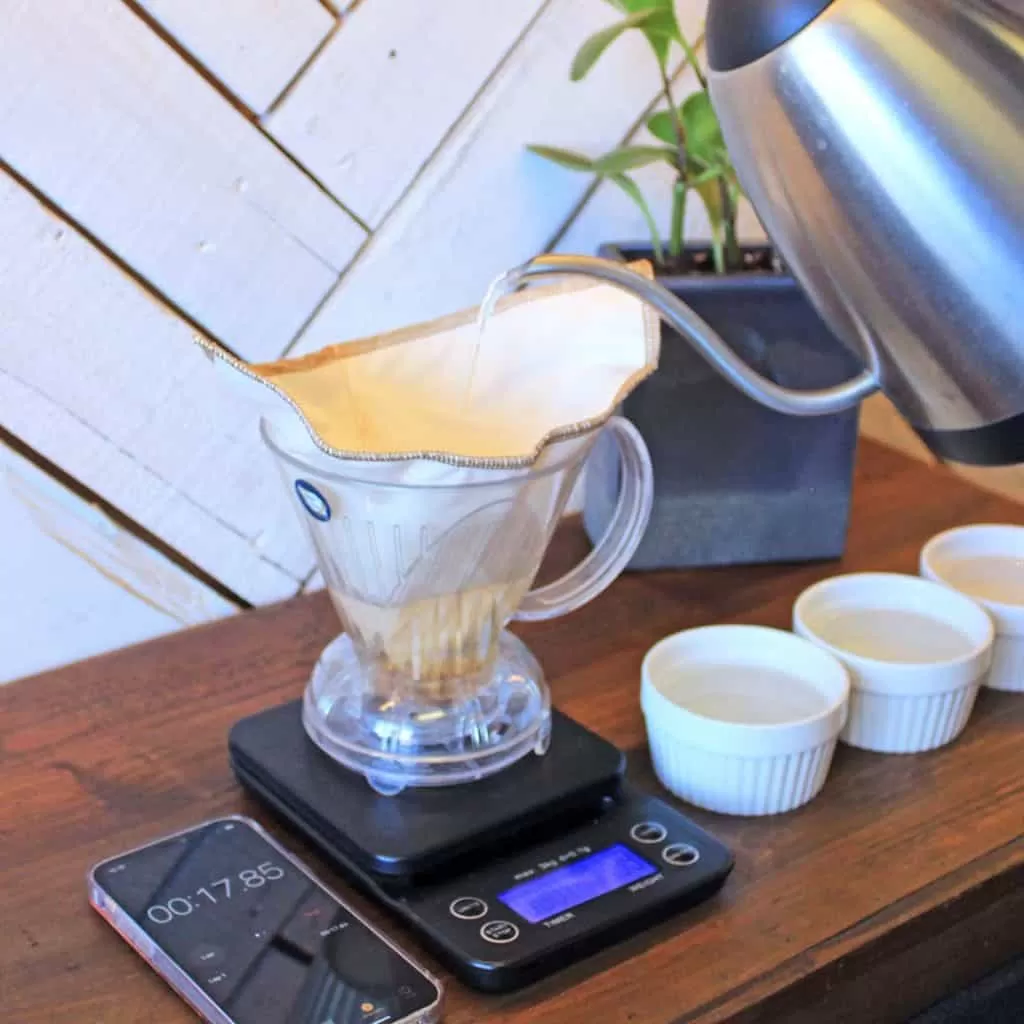
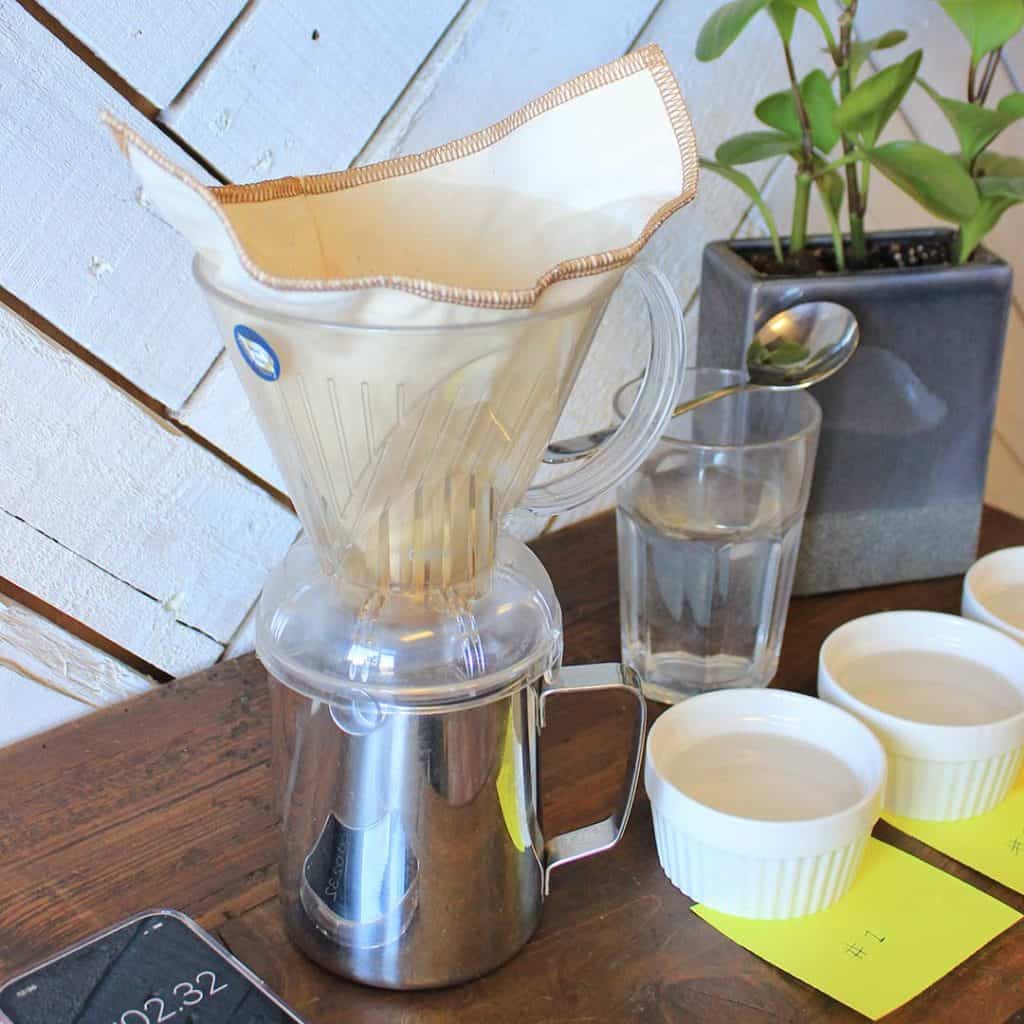
Even subtle variations such as water temperature and the agitation of flow during brewing can have an effect of how long it takes for water to percolate through the coffee grinds.
In effect, what we did is ‘cup taste’ each filter in the review. We did this to determine whether different materials and brands have an identifiable taste. Our hypothesis is that any taste unintentionally added to the coffee by the filter might be considered a defect, whether the taste is pleasant or unpleasant.
We flooded each filter with 400mL of hot filtered water at 205 degrees F for 4 minutes. Then we drained the water through the filter and recorded the time the water took to drain down. Using a Clever brewer for this test, as the valve can be used to hold the water and drain down as needed, regardless of the filter type.
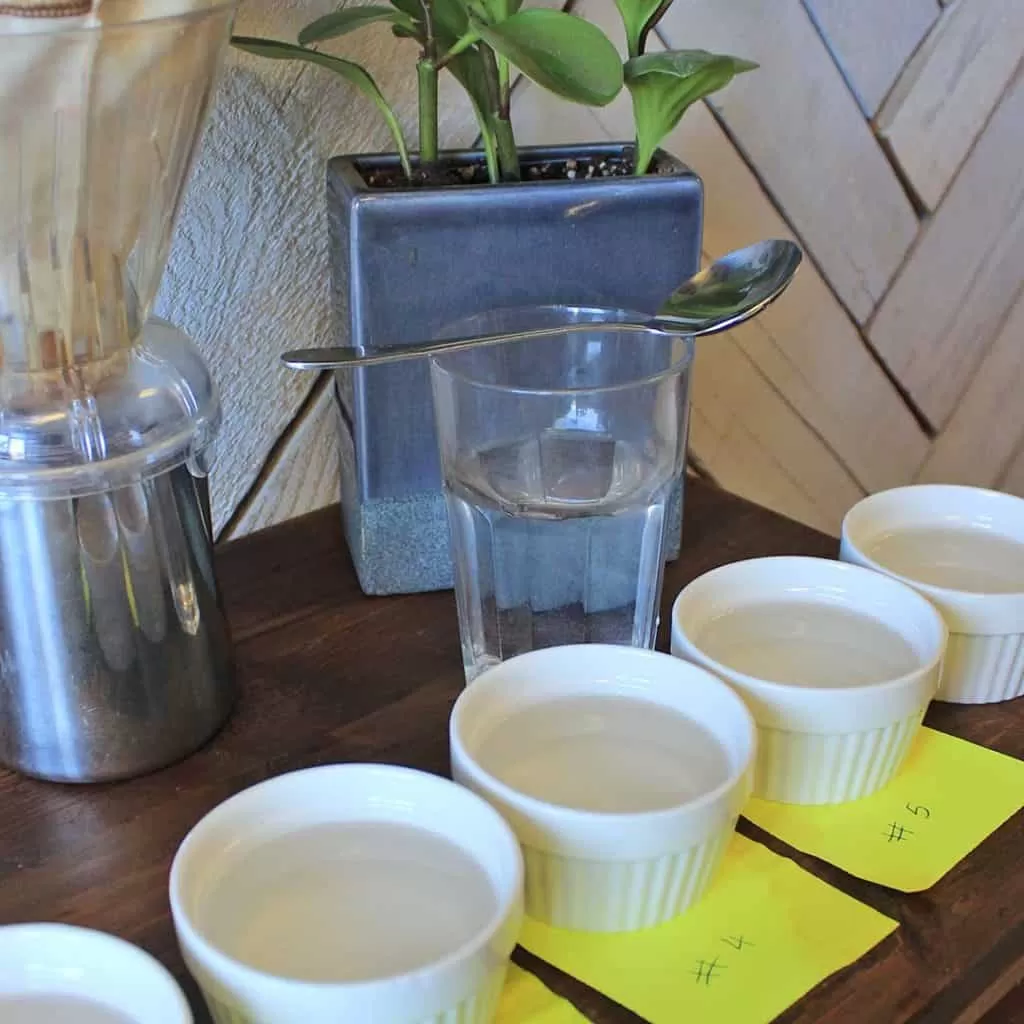
The exception to the method is the Aeropress filters, in which case we used an Aeropress and 250mL of the same 205 F water. The Aeropress filters were not steeped, which is consistent with how an Aeropress is typically used.
The water we used is our in house filtered coffee water, which is fine filtered, carbon filtered, and pH adjusted. It has a mineral content of approximately 150 ppm. Note: if you want to try this test at home, you could use Eska brand bottled water, which has a similar composition, and is good for coffee making.
The filter lineup
We bought the filters locally, at Metro, Walmart, No Frills and/or Longo’s. The branded filters for Hario, Chemex, Aeropress and the metal and cloth options are available at our roastery. Included in the table are the product links and unit cost.
It’s notable that the baskets filters for automatic drip brewers found in retail stores are considerably smaller that the standard ’12 cup’ Bunn commercial filters we use in the roastery.
A side note, the small size of theses retail basket filters would prevent using the recommended dose of coffee for a full pot (10 or 12 cup) without overflowing. Our standard dose of medium roast coffee for a 12 cup pot is 112 grams (4 ounces, 1/4 lb). Therefore, we’d recommend brewing only half to 3/4 of a pot with these retail basket shaped filters.
Rinsing paper filters with hot water before brewing coffee is widely recommended by coffee geeks and specialty roasters. A rinse might help remove any off tastes introduced by a paper filter. Hot water rinsing also allows an opportunity to pre-heat the filter holder, carafe and/or mug. This might be a good strategy for anyone who finds the pour-over coffee is not hot enough for them.
To rinse, or not to rinse?
Rinsing get a little more complicated for a coffee maker. The rinsing and preheating could be accomplished by brewing a partial pot of ‘water only’, with the filter installed in the basket, before making coffee. Many home coffee makers struggle to heat the water adequately, especially at the beginning of the brewing cycle. This any help over come that deficiency. The problems are, this takes a significant amount of time, and the basket filter is likely to collapse in on itself when used without coffee.
Brewing time
Some coffee experts, when weighing in on this filter question, expressed a preference for certain pour-over filters, for example Hario, that brew faster. The implicit assumption seems to be this: if 2 filters are brewed side by side, with the same coffee and technique, the ones that drains down faster is preferred. Aside from saving time, it isn’t clear to me why this preference exists.
As mentioned above, there are many factors that affect brewing time. There is general agreement from various professional sources such as the Specialty Coffee Association, commercial equipment manufacturers, authors and scientists that a brewing time of 4 to 5 minutes will result is a normal, well extracted brew.
Very short brewing times may yield a lower extraction, weaker brews, sour taste and/or thin body. Long brewing times may end up up high extraction, with resulting heavy body, and unpleasantly bitter or astringent aftertaste.
If you are finding one extreme or the other in your home brewing efforts, changing the filter for a different brand or type may be one good way to make an adjustment.
Never argue with the data
Here are the filter we tried.
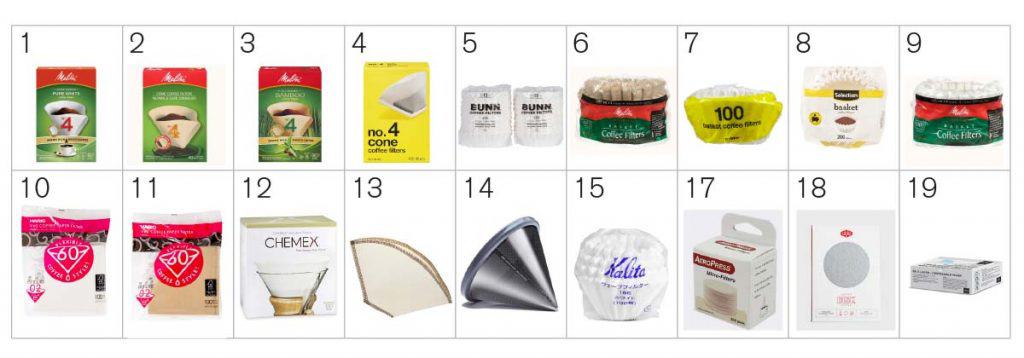
Here is a summary table with the measured test results.
| NO | TYPE | BRAND | MATERIAL | DRAIN TIME (s) | TASTE | COST ($/EA) | WHERE TO BUY (CLICK THE LINK) |
| 1 | Melitta No. 4 Cone | Melitta | white paper | 13.0 | yes | 0.08 | Walmart |
| 2 | Melitta No. 4 Cone | Melitta | brown paper | 13.4 | yes | 0.07 | Walmart |
| 3 | Melitta No. 4 Cone | Melitta | bamboo | 17 | yes | 0.07 | Walmart |
| 4 | Melitta No. 4 Cone | No name | white paper | 16.5 | yes | 0.03 | Loblaws No Frills |
| 5 | Basket / Drip | Bunn | white paper | 8.5 | yes | 0.02 | Home Hardware |
| 6 | Basket / Drip | Melitta | brown paper | 8.5 | yes | 0.03 | Walmart |
| 7 | Basket / Drip | No name | white paper | 7.6 | yes | 0.03 | No Frills |
| 8 | Basket / Drip | Selection | white paper | 18.9 | no | 0.02 | Metro |
| 9 | Basket / Drip | Melitta | white paper | 7.9 | yes | 0.03 | Walmart |
| 10 | Hario No. 2 | Hario | white paper | 8.3 | yes | 0.09 | Velvet Sunrise |
| 11 | Hario No. 2 | Hario | brown paper | 9.1 | yes | 0.09 | Velvet Sunrise |
| 12 | Chemex 8 cup | Chemex | white paper | 15.6 | yes | 0.15 | Velvet Sunrise |
| 13 | Chemex 8 cup | CoffeeSock | cotton fabric | 9.0 | yes | 17.00 | Velvet Sunrise |
| 14 | Chemex 8 cup | Able | stainless steel | 9.3 | yes | 60.00 | Velvet Sunrise |
| 15 | Kalita 185 | Kalita | white paper | 9.0 | no | 0.14 | Velvet Sunrise |
| 17 | Aeropress | Aeropress | white paper | 24.8 | no | 0.02 | Eight Ounce |
| 18 | Aeropress | Able | stainless steel | 11.7 | no | 19.50 | Eight Ounce |
| 19 | Mon-medical mask | Off brand | synthetic | no flow | yes | 0.28 |
Notes
- 250mL used for Aeropress, 400mL for the others.
- Water was allowed to cool to room temperature for tasting.
Conclusions
Most filters have a ‘taste’, including major brand names. Notable exceptions are due to Aeropress, Kalita, and Selection baskets filters (Metro house brand) for having no detectable taste impact in our tests.
Rinsing filters with hot water may help remove this taste, but we did not test this. If we were to test this in future, we would need to define how much water, at what temperature, and for how long to rinse a particular filter to remove any taste to below detectable levels.
Our control sample of hot water took 8 seconds to drain through the clever brewer, without any filter. The clever brewer drains quickly as it has a single draining hole which is larger than a Melitta cone. Your choice of brewer will have an effect on brewing time!
Have a think about permanent filters, and perhaps put them on your short list. While the upfront cost of permanent filters may be daunting, being conscientious about single use products is a good move toward sustainability. And you will never find yourself out of filters on a Sunday morning!
Just for fun!
On a recent trip, I found myself with coffee, an Aeropress, hot water, and (EEK!) no filters! Luckily, I had a good supply of non medical single use face masks. A perfect opportunity for a life hack! I removed the inner and outer layers. The inner filter layer appears to be a synthetic fabric. Being breathable, surely water will flow through. True enough!
Having cut out a circle to fit the Aeropress, it turned out to be a perfectly useful Aeropress filter. Interestingly, in this test, water by gravity did not drain through the face mask filter. But the added pressure provided by the Aeropress plunger made it work great. Who knows, perhaps there will be a use for all these disposable masks, once the pandemic is over.
 8-100 Ringwood Drive, Stouffville, ON, L4A 1A9
8-100 Ringwood Drive, Stouffville, ON, L4A 1A9




